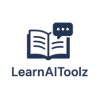What Are AI Accessibility Tools?
AI accessibility tools use machine learning, computer vision, and natural language processing to automate tasks that make digital content easier to perceive, operate, understand, and navigate. That includes automated captioning/transcription, alt text generation for images, automated accessibility audits, keyboard/screen-reader improvements, and assistive mobile features. These tools are not a replacement for human testing, but they speed up detection and remediation.
Why They Matter for Small Business
Small teams often lack dedicated accessibility engineers. AI tools lower the barrier by catching common issues early, providing captions and descriptions for media, and offering guided fixes—helping businesses reach more users and reduce legal and UX risk while staying efficient. Automated tools can cover a lot of ground quickly, but you should still validate critical user flows with real people who rely on assistive tech.
Popular AI Accessibility Tools (and what they do)
axe DevTools (Deque)
Best for: engineering teams who want automated accessibility testing in the dev workflow. Axe DevTools integrates tests into browsers, CI, and IDEs and includes AI-assisted checks to prioritize real-world impact issues during development. It’s a developer-first solution for catching errors early.
accessiBe
Best for: fast site-level remediation and overlays. accessiBe uses automated scanning plus AI-powered adjustments (screen-reader optimization, keyboard navigation fixes, and UI adjustments) to quickly make websites more compliant—useful for teams that need a turnkey web accessibility layer. Note: overlays help quickly reduce barriers but should be paired with manual fixes and content changes for the best long-term results.
Otter.ai (AI transcription & captions)
Best for: meetings, webinars, and audio-first content. Otter provides real-time transcription and exportable captions (SRT) that help make audio and video more accessible to people who are deaf or hard of hearing and those who need written records of spoken content. It’s a practical, low-friction way to add captions to recordings.
Be My Eyes / Be My AI
Best for: vision assistance and on-demand help. Be My Eyes pairs blind and low-vision users with volunteers and offers an AI assistant that can describe images and scenes, helping users with product details, labels, and navigation tasks—great for product teams building visual assistance features.
Equally AI (ARIA) & Silktide
Best for: automated scanning and compliance reporting. Tools like Equally AI’s ARIA scanner and Silktide use automated checks (and AI enhancements) to surface WCAG issues and give teams prioritized recommendations—they’re handy for audits and compliance tracking.
Quick Comparison Table
| Tool | Primary Use | Strength | Good For |
|---|---|---|---|
| axe DevTools (Deque) | Automated testing | Developer integration, high accuracy | Engineering teams, CI pipelines |
| accessiBe | Automated remediation / overlays | Fast site coverage, turnkey install | Small teams needing quick compliance |
| Otter.ai | Transcription & captions | Real-time captions, easy exports | Meetings, webinars, podcast transcripts |
| Be My Eyes / Be My AI | Vision assistance | Human+AI help for visual tasks | Product accessibility, customer support |
| Equally AI (ARIA) / Silktide | Site scanning & compliance | Audit reports & prioritized fixes | Audits, compliance monitoring |
How to Choose the Right AI Accessibility Tools (Actionable Steps)
- Define your priority flows: choose a few critical pages or features (checkout, search, forms) to protect first.
- Combine tools: use automated scanners (axe, Equally AI) + remediation (if needed) + human testing with assistive tech and users.
- Add captions/transcripts: use Otter or built-in cloud captioning to make video/audio accessible quickly.
- Integrate into your workflow: put accessibility checks in PRs/CI (axe DevTools) so issues are caught early.
- Validate with real users: run tests with people who use screen readers, speech input, or other assistive tech—AI helps, but user testing proves effectiveness.
FAQs — AI Accessibility Tools
Q: Will AI accessibility tools make my site fully WCAG compliant?
A: Not on their own. AI tools can find and fix many issues quickly, but WCAG compliance often requires manual code, content, and UX changes plus documentation. Treat AI tools as accelerators, then validate with human audits.
Q: Are automated overlays (like accessiBe) safe to use?
A: Overlays can improve access fast and may help with initial compliance, but accessibility advocates warn they’re not a complete substitute for semantic HTML, manual fixes, and user testing. Use overlays as part of a broader remediation plan.
Q: Can AI accurately generate alt text for images?
A: AI can produce useful alt text quickly (especially for generic images), but it sometimes misses context or important details. Always review and edit AI-generated alt text for accuracy and relevance.
Q: Which tools are best for small teams on a budget?
A: Start with a free/low-cost scanner (some axe DevTools options and Equally AI scanners offer free tiers) plus an affordable captioning service (Otter). Pair these with occasional human testing or volunteer testing sessions to catch real-world problems.
Q: How quickly can I see improvements after using AI tools?
A: Automated scans and captions can produce immediate, visible gains (minutes to days). Deeper UX and code fixes take longer weeks to months especially when rolling changes into releases and validating with users.
Final Thoughts
AI accessibility tools are powerful allies for small businesses: they reduce routine work, speed up captions and scans, and help prioritize fixes. But the best results come from mixing automation with human review and real-user testing. Pick tools that fit your team (developer-first vs. turnkey), start with priority flows, and iterate-accessibility is continuous improvement, not a one-time task.
